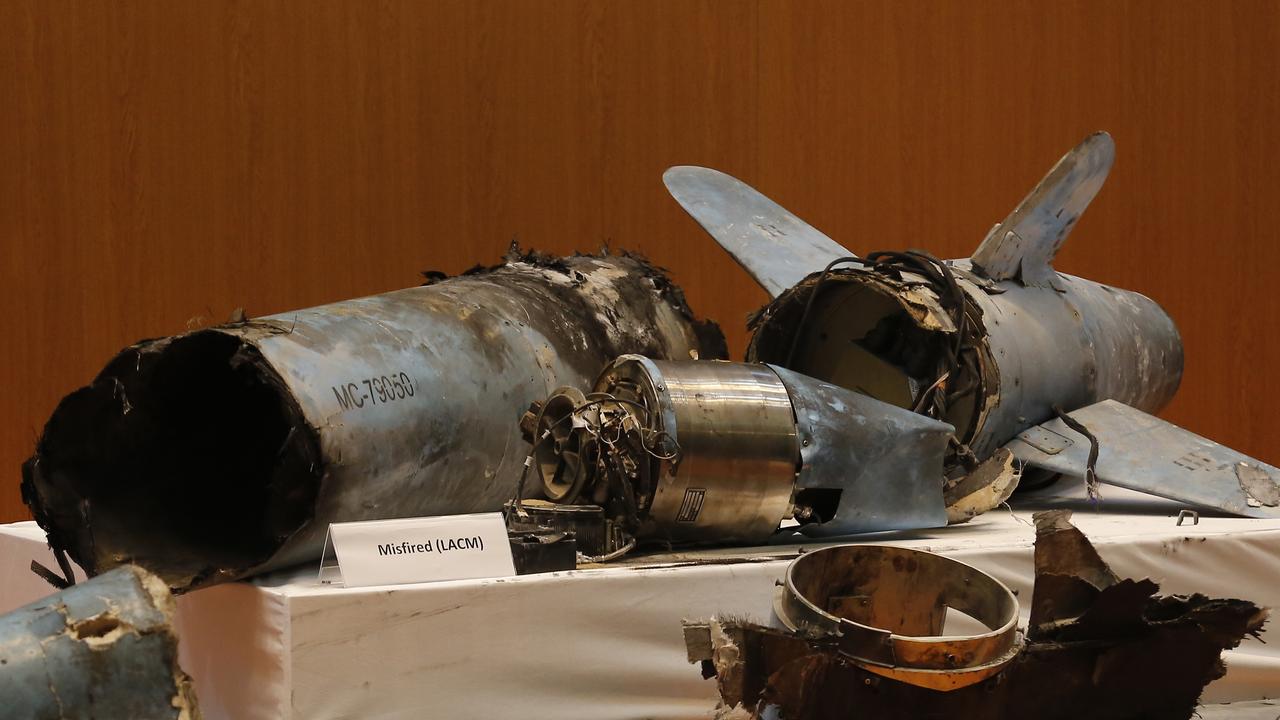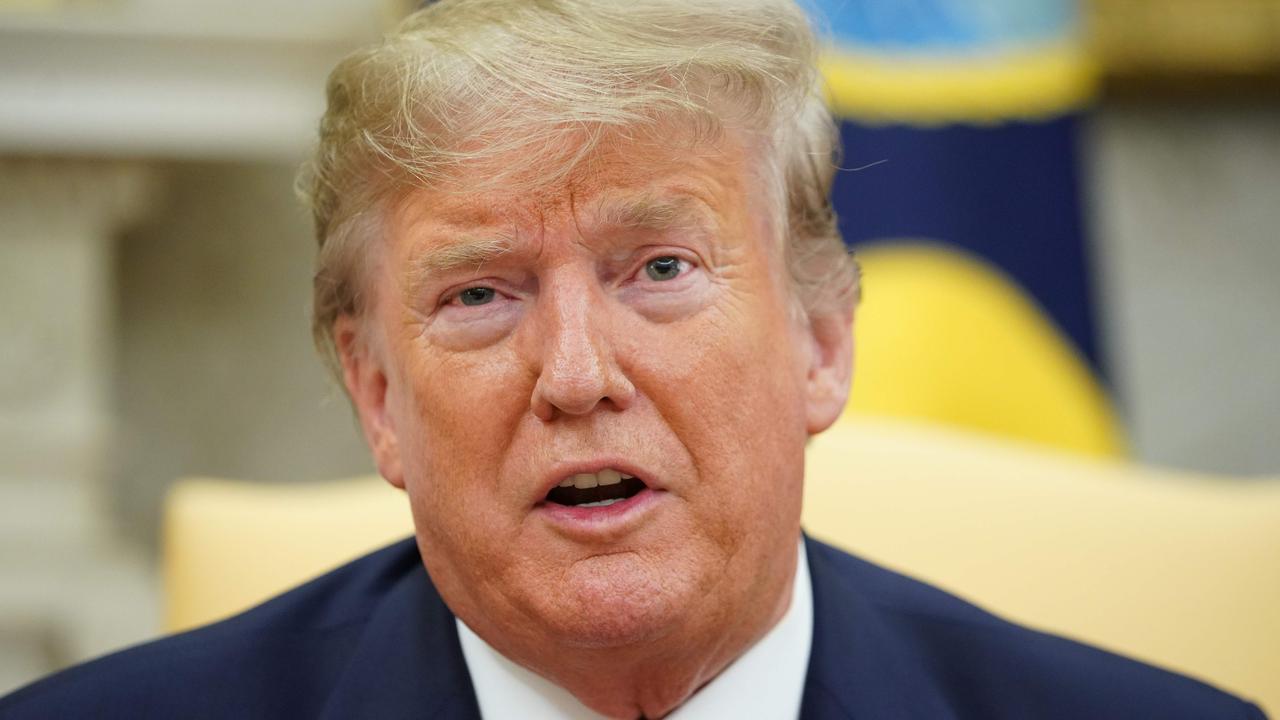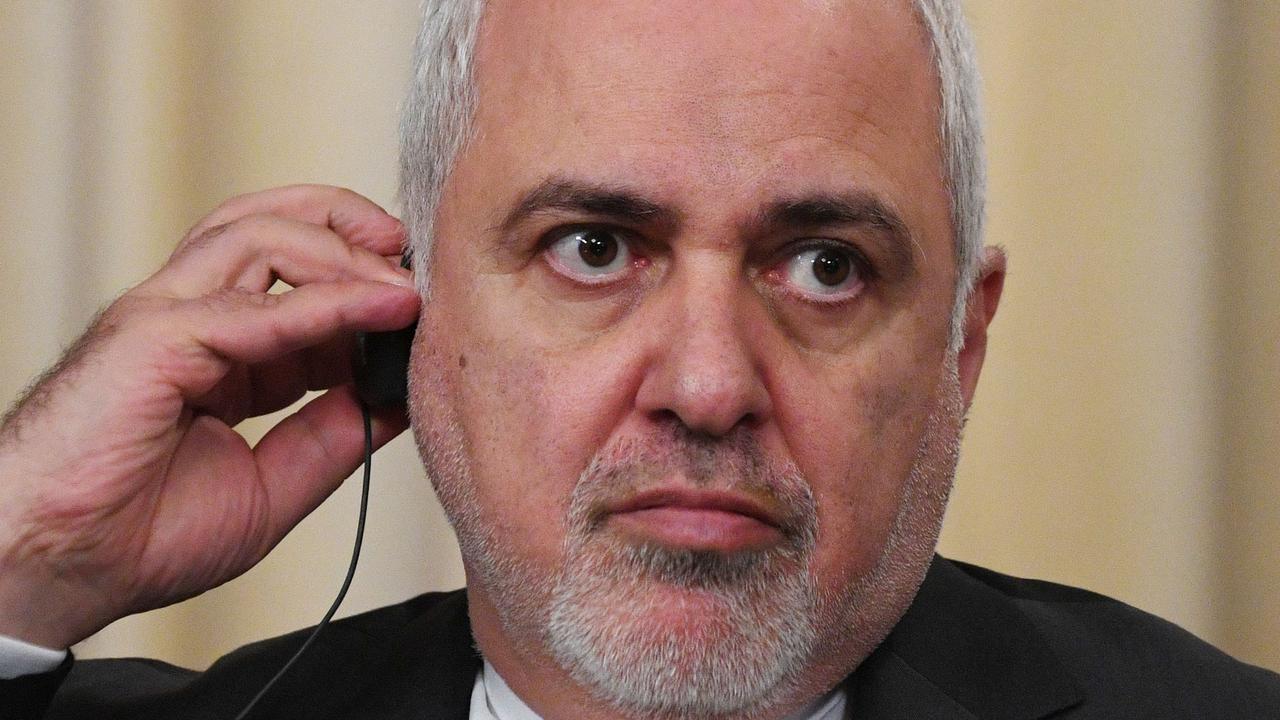How Iran’s attack on Saudi Arabia was exposed
Iran said it had nothing to do with the attack on a Saudi Arabia oilfield. But according to global officials, these are the facts that exposed that as a lie.
Saudi Arabian officials say they’ve unveiled evidence that proves Iranian involvement in air strike attacks on two oil facilities last weekend.
The kingdom’s defence ministry said 18 drones and seven cruise missiles were fired from a direction that implicated Iran.
Defence ministry spokesman Colonel Turki al-Malki said the evidence showed the attacks were launched from the north and were “unquestionably sponsored by Iran”.
Among the debris was what was said to be a delta wing of an Iranian unmanned aerial vehicle.


Colonel Malki said 18 UAVs had been fired at the Abqaiq oil facility and seven cruise missiles launched at both targets. Four struck the Khurais oilfield and the other three came close to Abqaiq.
According to Colonel Malki, the direction of the attack and the precision impact all suggested Iran was responsible for the strikes.
“Despite Iran’s best efforts to make it appear so, their collaboration with their proxy in the region to create this false narrative is clear.”
A week on from the attacks, Iran continues to deny involvement, maintaining that Iran-backed Houthi forces in neighbouring Yemen were to blame.
But neither the Saudis nor the US is buying it, and now, each side is inching closer and closer to war.
HOW DID THIS ALL START?
Last Saturday, Saudi Arabia’s Abqaiq plant and Khurais oilfield were attacked by air strikes.
These attacks marked the single worst sudden disruption to the oil market ever, leading to the interruption of an estimated 5.7 million barrels of the kingdom’s crude oil.
It helped drive world oil prices up by 10 per cent on Monday — the fastest rise in over a decade.
Satellite images released by the US government showed the sheer extent of the damage.
WHY TENSIONS ARE ON THE RISE
Over the past week, tensions have been building between the US and Saudi Arabia, and Iran.
Iranian-allied Houthi rebels in Yemen, which Saudi Arabia are at war with, claimed responsibility, saying drones were launched in the attack.
But Saudi Arabia has claimed the attack did not come from Yemen and said initial investigations show Iranian weapons were used. The kingdom has not yet said where the attack was launched from or what kind of weapons were involved.
The US has made similar allegations, going so far as to say the attack may have been launched from Iran itself or nearby Iraq, where Iran has powerful proxy militias on the ground.

Iran has denied the charges from the start, responding with fury to the accusation and going as far as to threaten US bases with missile strikes.
This show of force didn’t come from nowhere; tensions between the US and Iran have been high for over a year now.
Last year in May, President Donald Trump withdrew from the Joint Comprehensive Plan of Action, or “Iran deal”, by which Tehran agreed to scrap its uranium and nuclear-building facilities in exchange for the lifting of crippling economic sanctions.
Mr Trump said it was a “horrible one-sided deal” that gave Iran too much power.
In June this year, Iran shot down a US military surveillance drone, destroying an expensive piece of equipment.
The US military responded targeting Iran with a cyber attack that disrupted Iran’s missile program, and Mr Trump traded insults with Iranian officials over the events.
This week’s feud is just the latest round of those ongoing tensions, but it could be the point that escalates to war.
IRAN THREATENS ‘ALL-OUT WAR’
The Iranian government has threatened “all-out war” in the event of US or military strikes against its country, warning whether Saudi Arabia is prepared to defend itself “to the last American soldier”.
Iranian foreign minister Javad Zarif said that, while the country was willing to talk to its regional rivals in the Middle East, it would not hold talks with the US unless Washington went back on its sanctions.

Asked by CNN what the consequence of a US or Saudi military strike would be, Mr Zarif replied: “All-out war.”
“I make a very serious statement about defending our country. I am making a very serious statement that we don’t want to engage in a military confrontation,” he said, adding that a military response based on “deception” about the weekend attacks would cause “a lot of casualties”.
“But we won’t blink to defend our territory,” he said.
Iran wasn’t the first country to play the war card. Yesterday, US Secretary of State Mike Pompeo accused Iran of carrying out an “act of war” with the Saturday air strikes, marking the strongest condemnation yet from any American official on the attack.
“The Saudis were the nation that was attacked. It was on their soil. It was an act of war against them directly,” Mr Pompeo told reporters.
Mr Zarif responded to this on Twitter with a threat to the US, saying, “They should pray that they won’t get what they seek.”
"Act of war"or AGITATION for WAR?
— Javad Zarif (@JZarif) September 19, 2019
Remnants of #B_Team (+ambitious allies) try to deceive @realdonaldtrump into war.
For their own sake, they should pray that they won't get what they seek.
They're still paying for much smaller #Yemen war they were too arrogant to end 4yrs ago.
WHAT WILL HAPPEN NEXT?
Experts say the US is most likely to take direct action against Iran if the situation deteriorates further.
Earlier in the week, Dr Malcolm Davis, a senior analyst at the Australian Strategic Policy Institute, said America's reputation was on the line in light of all the war threats.
“This was a serious escalation of the conflict. They attacked not just Saudi oil but the world’s oil, and if you look at the last few months, it’s the Iranians that are doing all the provocations here,” he told news.com.au. “I think US credibility would be on the line if they didn’t respond. As their opening gambit they could use air and missile strikes to attack Iranian nuclear facilities.
“The Iranians are now steadily breaking out from the constraints of the JCPOA (Joint Comprehensive Plan of Action) and building up material for a nuclear weapon. America sees this as an opportunity to strike and prevent this from happening.”
At the same time, a group of panel experts suggested the US and Iran would lead this conflict, noting that Saudi Arabia was not in a position to directly criticise Tehran.
The Wall Street Journal notes that the Saudis have stopped short of explicitly accusing Iran of conducting the strikes.
Lieutenant Colonel Dakota Wood concluded that the Saudi’s were not pointing the finger squarely at Tehran because that may cause an escalation in an already fraught situation in the region.
“If (Saudi Arabia) names Iran as the aggressor then it’s beholden … that they have to respond in some ways,” Lt-Col Wood, a retired Marine and Senior Research Fellow for Defence Program at the Heritage Foundation, told Fox Nation’s Deep Dive on Friday.
“Is their military, which is well-equipped, is it tactically competent? And then are they willing to suffer the consequences of some kind of a conflict when they are so dependent on this energy infrastructure.”
Judith Miller, adjunct fellow at the Manhattan Institute for Policy Research, Pulitzer-winning journalist and Fox News contributor said the Saudis knew they were not able to defeat Iran in a full-blown conflict.
“The Saudis either don’t believe the Americans or don’t want to believe the Americans, because they don’t want to be saddled with the burden to respond militarily to Iran because they understand that in such a contest they would be toast.”
HOW DOES THIS AFFECT AUSTRALIA?
It may feel like we’re far-removed from this feud, but there’s one big problem — Australia’s onshore oil and petrol reserves are incredibly low.
Since 2012, Australia has been in breach of its international obligations to hold a 90-day minimum of fuel reserves as set out by the International Energy Agency (IEA).
This is basically the amount of crude oil we have onshore that we can dip into or share if the global oil supply faces disruptions.

Australia has just 27 days worth of petrol in reserve according to a government review, as Saudi Arabia scrambles to restore its oil production in the wake of last week’s drone attacks.
The country also has 21 days worth of diesel, 23 days worth of jet fuel and 31 days worth of crude oil in storage, according to the The Department of Environment and Energy’s Liquid Fuel Security Review interim report, released in April.
The figures represent the number of days Australia’s stocks would last under “normal use”, but don’t take into account “fuel that is already in or on the way to fuel stations or products in tanker ships on their way to Australia”, the report says.
“It also excludes crude oil that could be refined into products in Australia. If these were included, our consumption days would be higher,” the report adds.
Retired Air Vice Marshal John Blackburn, a former member of the Royal Australian Air Force who has previously investigated the country’s fuel security, told the ABC that was nowhere near enough.
Instead, he claims the country’s reserves would likely dry up after a week if there was a major disruption to supply.
“Australia’s fuel reserves are all about ‘just-in-time’ logistics delivery. It makes economic sense, but it’s not very resilient,” he said.
— with Alle McMahon



